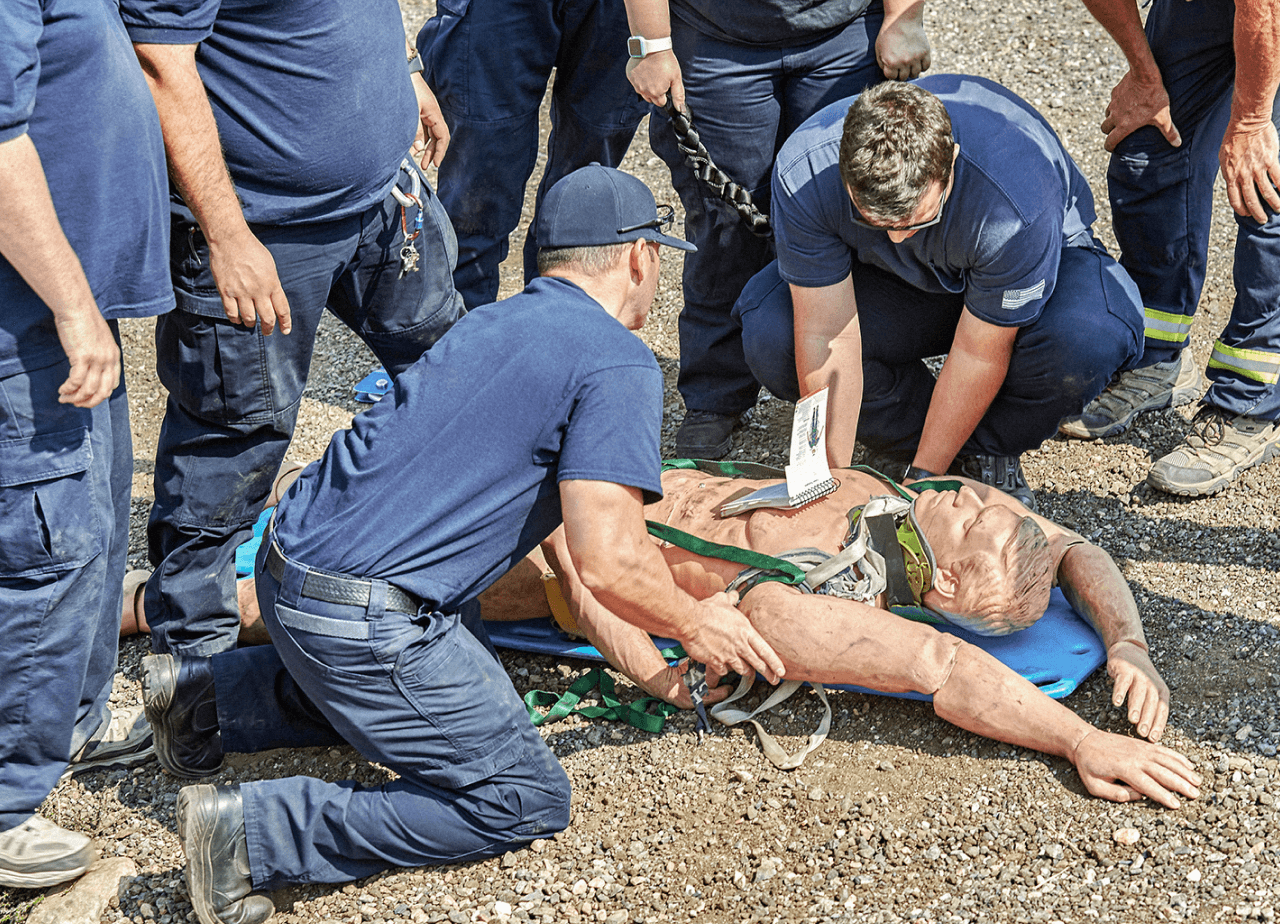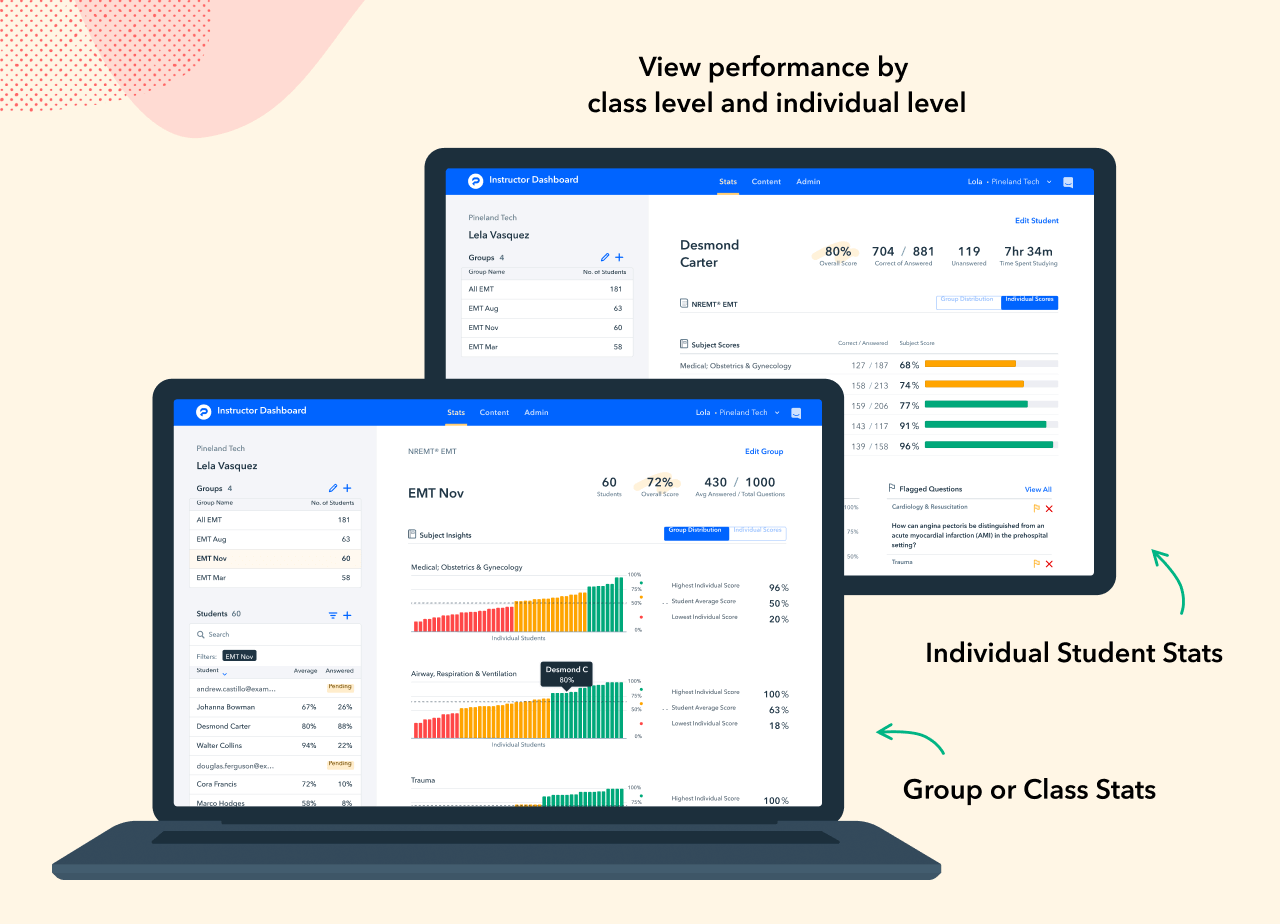As an Emergency Medical Services (EMS) educator or administrator of an EMS program, ensuring that your training program meets the National EMS education standards is crucial. By adhering to these EMS regulatory standards, you validate the quality and credibility of your program and ensure that your graduates are well-prepared to provide competent and effective care in the field.
In this blog post, we’ll walk you through the essential steps to ensure your EMS program meets and maintains compliance with national standards.

Understanding National EMS Accreditation Standards
Before you can align your EMS curriculum standards with regulations, it’s important to understand the compliance components for EMS education to ensure that your students are well-prepared and that your program stays accredited.
The National EMS Accreditation Standards, set by the Committee on Accreditation of Educational Programs for the Emergency Medical Services Professions (CoAEMSP), and recognized by the Commission on Accreditation of Allied Health Education Programs (CAAHEP), are a testament to the quality and consistency they maintain across EMS systems in the United States. These standards are designed to ensure that EMS programs provide high-quality education that prepares students to meet the demands of the EMS profession.
Key areas of focus include:
- Curriculum Development: Ensuring the program’s curriculum aligns with the latest National EMS Education Standards (NEMSES), as well as any state-specific EMS program requirements. This is crucial for achieving accreditation for EMS programs and ensuring that your program is recognized for its quality and teaching organization.
- Faculty Qualifications: Verifying that instructors are appropriately credentialed and experienced. All instructors in your program should meet the qualifications set by accrediting bodies. This includes the Program Director and Medical Director, who play critical roles in ensuring that the program trains and educates students effectively.
- Clinical and Field Internship Experiences: Providing students with sufficient hands-on experience in clinical settings and during field internships. This practical component is vital for aligning the EMS curriculum with real-world needs and ensuring students are ready for roles in ambulance services, paramedic programs, and other EMS operations.
- Program Resources: Ensuring access to adequate facilities, equipment, and support services. The availability of sufficient resources is crucial for delivering a high-quality EMS program. This includes physical resources, financial support, and student services that contribute to an effective learning environment.
- Student Outcomes: Tracking and analyzing student performance, including certification exam pass rates, job placement rates, and program completion rates. These assessments ensure that your program meets the required EMS curriculum standards and prepares students for higher levels of responsibility in emergency response.
Steps to Ensure EMS Education Compliance
Aligning your curriculum with national EMS education standards involves careful planning and execution. Here are seven steps you can take to ensure your EMS curriculum alignment is effective:
- Conduct a Comprehensive Program Review
Begin by thoroughly reviewing the National EMS Education Standards and any state-specific guidelines. Identify gaps where your current curriculum may need to meet EMS program requirements. - Align Curriculum with National Standards
Ensure your program’s current curriculum aligns with the National EMS Education Standards. This includes covering all necessary competencies, incorporating evidence-based practices, and integrating new technologies or methods as national guidelines recommend. - Enhance Faculty Development
Your instructors are the backbone of your program. Invest in their professional development to stay current with industry trends, teaching methodologies, and technological advancements. Encourage faculty to pursue advanced certifications or continuing education opportunities. - Strengthen Clinical and Field Internship Experiences
Collaborate with local EMS agencies, hospitals, and clinics to provide students with diverse and comprehensive clinical and field internship experiences. Ensure these experiences are well-documented and meet the required hours and competencies outlined by accreditation standards. - Use Standardized Assessments
Implement standardized tests and practical exams to assess student performance, ensuring they meet the required competencies. These assessments are critical for EMS education compliance and EMS program evaluation, especially when preparing students for roles in EMT programs, paramedic programs, or as part of ambulance services. - Monitor and Improve Student Outcomes
Regularly collect and analyze data on student performance, including certification exam pass rates, job placement rates, and program completion rates. Use this data to identify areas for improvement and implement strategies to enhance student success. - Maintain Proper Documentation
Accreditation agencies require extensive documentation to verify compliance. Keep detailed records of curriculum changes, faculty qualifications, student outcomes, and other relevant information. Ensure that your documentation is organized and readily accessible for accreditation reviews.
Best Practices for Ongoing Program Improvement
Achieving compliance is not a one-time task; it’s an ongoing process. Regular EMS program evaluation is necessary to ensure that your program continues to meet EMS regulatory standards. Here are some EMS education best practices to help maintain and improve your program:
- Annual Reviews: Conduct yearly reviews of your curriculum and teaching methods to identify areas for improvement. This practice is crucial for sustaining EMS program compliance and ensuring that your program remains relevant and effective.
- Feedback Loops: Collect feedback from students, instructors, and clinical partners to continuously refine your program. This process helps improve EMS education by addressing areas that may need enhancement, especially in real-time situations critical to EMS operations.
- Professional Development: The importance of encouraging instructors to pursue ongoing professional development cannot be overstated. Whether through free online EMS continuing education or paid courses, continuous improvement in EMS programs is essential for long-term success, especially for program directors responsible for shaping the future of EMS systems.

Leveraging Technology to Maintain Compliance
Technology is important for EMS compliance and keeping your program current and effective. Consider using the following technologies in your EMS education:
- Learning Management Systems (LMS): Use an EMS LMS platform to track student progress, administer assessments, and store important documents. This technology is a valuable resource for EMS educators and helps maintain compliance across all aspects of your training program.
- Simulation Technology: Implement EMS simulation technology to provide realistic training scenarios that enhance student learning. Technology in EMS education like this is crucial for delivering hands-on experience in a controlled environment, particularly for students entering EMT programs or paramedic programs.
- Online Resources: Utilize EMS online learning resources and continuing education platforms to keep your curriculum and teaching methods up-to-date. These resources are important for the EMS program as they aid programs in adjusting to the changing needs.
Ensuring Long-Term Success
Ensuring your EMS program meets compliance with National EMS Accreditation Standards is essential for maintaining the learning experience and credibility of your program. By following these steps and committing to continuous improvement, you can create a robust educational experience that prepares your students with the skills and knowledge for successful careers in EMS.
Accreditation is a journey, not a destination. Stay proactive, stay informed, and strive for excellence in your EMS program.

